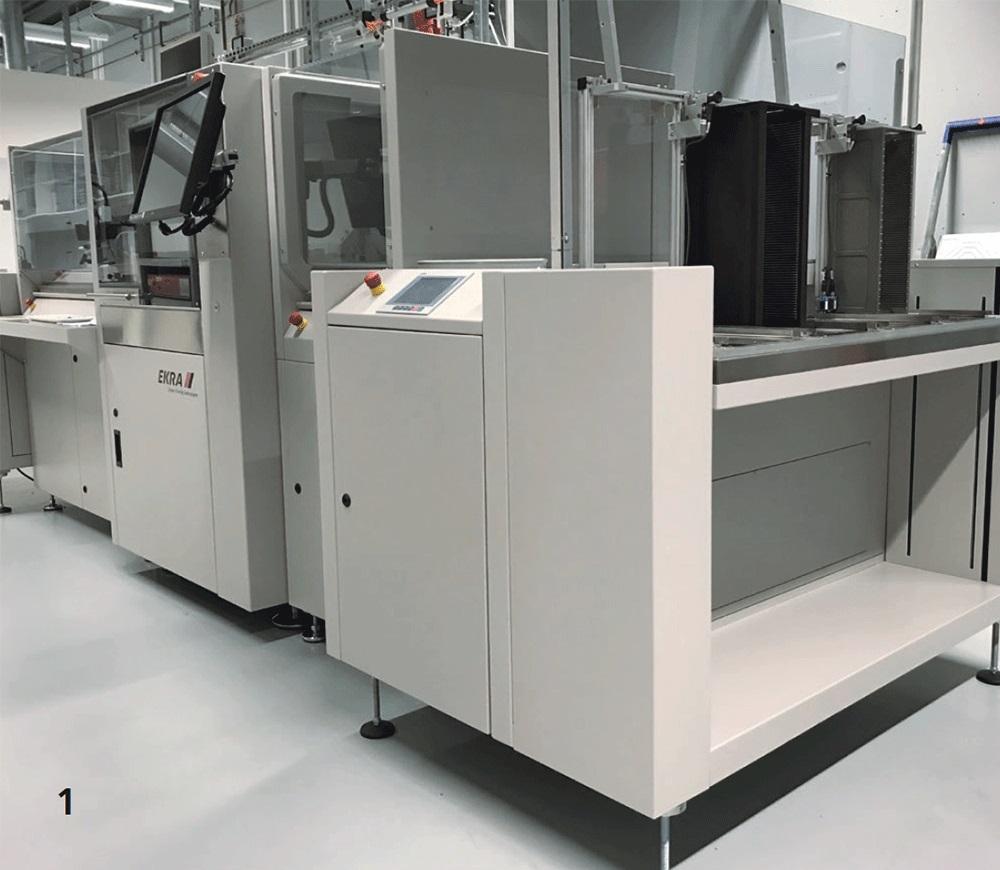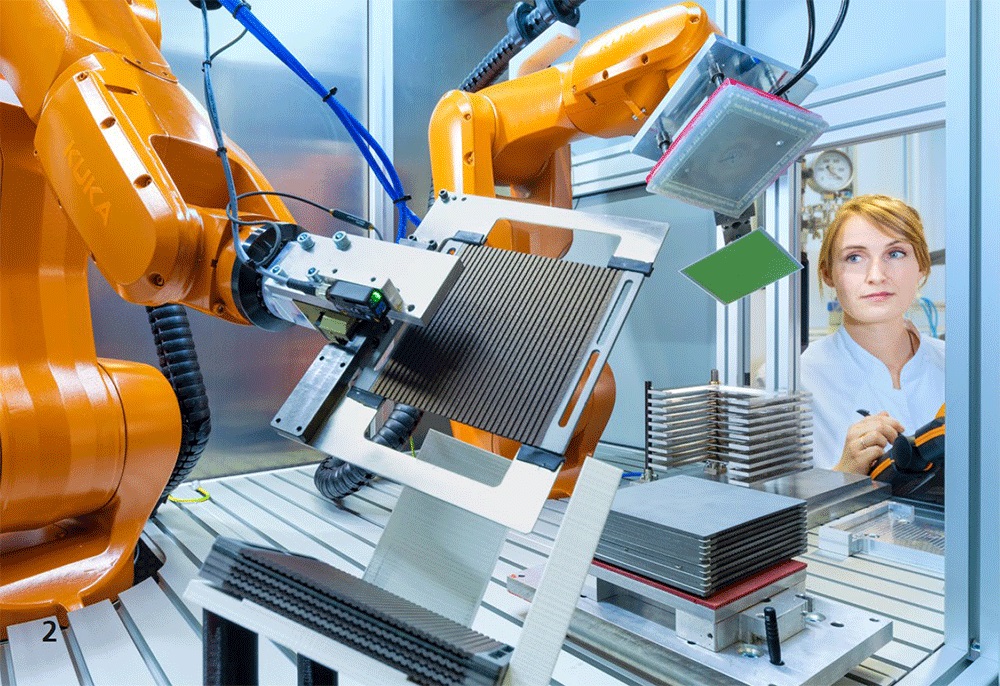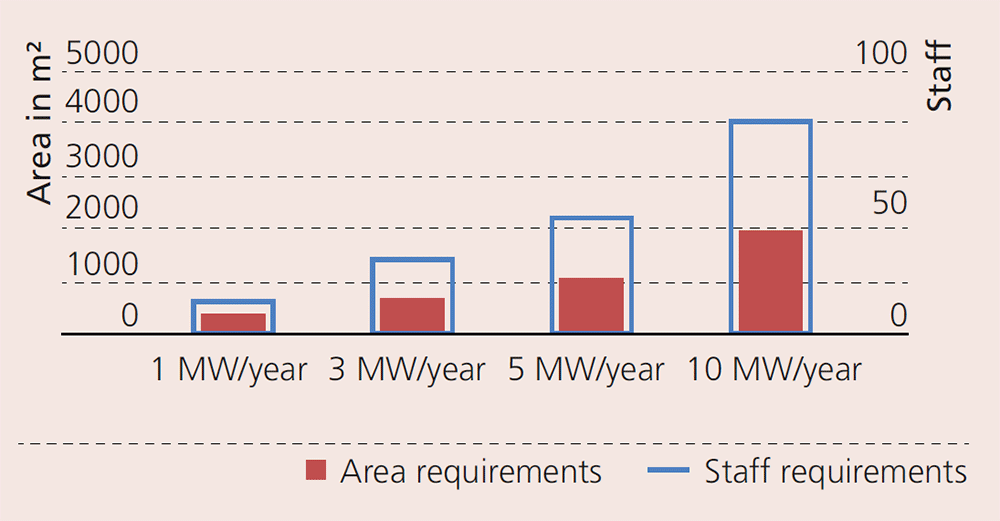
Process development for the commercial production of SOC cells and stacks
Current research




For more than 20 years, Fraunhofer IKTS has conducted intensive research on high-temperature fuel cells (SOFC) with electroyte-supported cells, with the focus in recent years placed increasingly on their use in high-temperature electrolyzers (SOEC). For this reason, IKTS has developed bidirectional SOC cells and stacks. They are key components for the conversion of excess power to synthetic gas, liquid fuels and their efficient conversion back to electric power. SOC stacks based on a chromium-based alloy of the MK35x design have now reached a sufficient level of technology to be transferred into commercial production. In collaboration with mPower GmbH, a pilot production scheme with a capacity of 1 MW/year and an extended capability of 10 MW/year was conceived based on the well-established prototype production at IKTS. For the steps of lab production that determine the production rate, such as coating, stack assembly and joining, specific automated solutions were developed. As a result, a process chain suitable for series production was designed and configured, which achieves a maximized output quota with minimal equipment and manpower requirements. Continuous screen printing and drying technology for cell production, including the non-destructive examination of the ceramic electrolyte, resulted in higher output rates. The semi-automated glass application machine (SANGAM) developed at IKTS reduces the cycle time for assembling single components by 70 % and enables an automated stacking procedure. The technical breakthrough came thanks to a change of technology at the glass sheet application. The glass is sintered and molten in the joining process and seals the fuel gas from the air and the surrounding atmosphere. As this process requires a lot of energy, heat treatment was reduced significantly and the reduction was experimentally validated. Adapted joining machines were designed which need 90 % less energy than state-of-the-art devices. The core components and improved processes thus developed enable the production of 1 MW/year (1000 stacks including cell production) on less than 500 m2 production space.
Services offered
- Process optimization of screen printing and stack assembly
- Test of stack components under real conditions
- Stack and stack module development for SOFC/SOEC systems
Supported by

